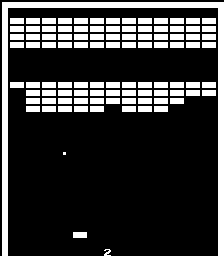Super Breakout (rev 04)
Game Information
| manufacturer | Atari |
| year | 1978 |
| cloned by | sbrkout3 sbrkoutc sbrkoutct |
| genre | Ball & Paddle |
| downloads | 200 |
Screenshots










Download Details
| split set | sbrkout.zip 4.55k |
| merged set | sbrkout.7z 9.67k |
| standalone set | sbrkout.7z 3.80k |
| artwork | sbrkout.zip 246.14k |
Driver Details
| source | atari/sbrkout.cpp |
| status | good |
| emulation | good |
| savestate | supported |
Series Details
Screen Details
| display | screen |
| type | raster |
| orientation | horizontal |
| width | 256px |
| height | 224px |
| refresh | 60.11mhz |
Input Details
| player | 1 |
| type | paddle |
| buttons | 1 |
| directions | N/A |
Chipset Details
| name | MOS Technology 6502 |
| clock | 738.28khz |
| name | Speaker |
| clock | N/A |
| name | 1-Bit DAC |
| clock | N/A |
ROM Details
| name | size | crc |
|---|---|---|
| 033453.c1 | 2.00k | a35d00e3 |
| 033454.d1 | 2.00k | d42ea79a |
| 033455.e1 | 2.00k | e0a6871c |
| 033280.p4 | 512.00b | 5a69ce85 |
| 033281.r4 | 512.00b | 066bd624 |
| 033282.k6 | 32.00b | 6228736b |
| 006400.m2 | 256.00b | b8094b4c |
| 006401.e2 | 32.00b | 857df8db |